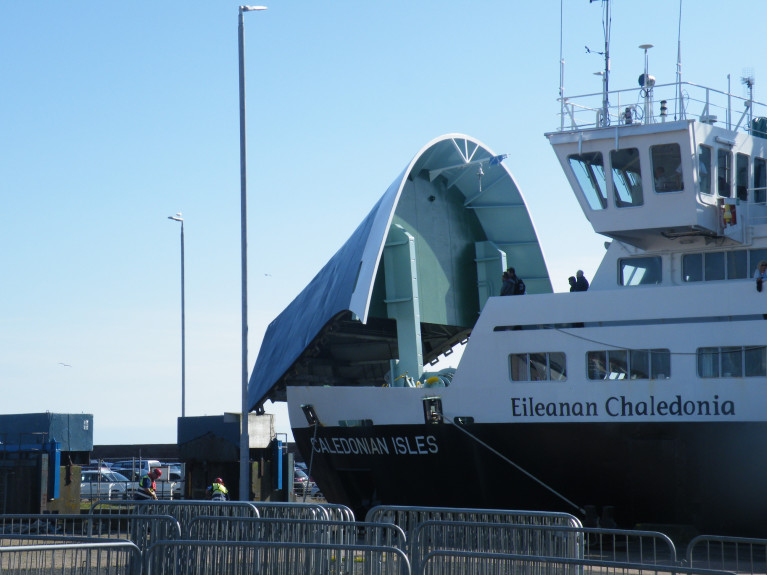Displaying items by tag: BiLingual
Largest UK Ferry Operator Offers Bi-Lingual Gaelic & English Customer Care Service
The largest UK ferry and harbour operator is adding to its support for Gaelic speakers by offering a bi-lingual English and Gaelic customer care service.
As a pilot project over the summer the Scottish ferry operator, Caledonian MacBrayne (CalMac) created a new customer care centre in Stornoway, Isle of Lewis (see Afloat coverage of Irish Sea ferry trials). The pilot project has led to six new jobs in the capital of the island which forms part of the Outer Hebrides. CalMac has now confirmed this as a permanent fixture with staff there enhancing the Gaelic face of the company.
Previously assistance from a Gaelic speaker was only available to Gaelic-speaking customers telephoning or visiting port offices in Gaelic-speaking areas, but now anyone who would like to make an enquiry in Gaelic can be transferred to a native speaker to deal with their booking.
The Stornoway team will also be steadily transforming CalMac's social media channels into a bi-lingual offering as well.
There are around 60,000 Gaelic speakers in Scotland, and the majority of people living in the Western Isles are able to speak Gaelic.
'We are committed to looking at ways of spreading jobs more evenly across our area of operations and I'm delighted to confirm that the summer pilot we ran in Stornoway will now be a permanent fixture in the town,' said CalMac's Managing Director, Robbie Drummond.
'Given the prevalence of the Gaelic language in the Western Isles it was a natural step to make this the centre of our new bi-lingual customer service offering.
'This is something we have been keen to introduce for some time and this new centre now gives us the capacity to support this.'
CalMac has long history of support for the Gaelic language, including as the principal commercial supporter of the Royal National Mod.
Shona MacLennan, Chief Executive, Bord na Gaidhlig welcomed the news.
'We always welcome new developments which contribute to the National Gaelic Language Plan's aim that more people use Gaelic more often in more situations. CalMac's introduction of this service will support that aim, and is particularly appropriate in their customer care centre which in Stornoway. By locating those jobs in a Gaelic speaking community this will bring important economic benefits to the Western Isles,' she said.
CalMac currently employs around 1700 people from Campbeltown (Mull of Kintyre) in the south to Stornoway in the north, 60% of them living and working in fragile coastal or island communities. Last year they carried more than 5.6 million passengers on its fleet of 33 vessels across 28 routes to island and remote mainland destinations.
CalMac's customer service team handles more than 300,000 calls and 44,000 emails every year.
They have achieved the highest level of accreditation from the Contact Centre Association for the quality of its customer service who described them as 'a competent, well managed, highly customer focused operation.'
They were particularly impressed by the development and use of social media to keep passengers up-to-date. Over the last year the team managed almost 30,000 social media messages and has attracted more than 100,000 online followers.
'Our social media platforms have a large and loyal following which continues to grow as passenger numbers increase. Being able to offer bi-lingual messages allows us to focus even more closely on how we speak to customers in a way that suits them best,' added Robbie.





























































